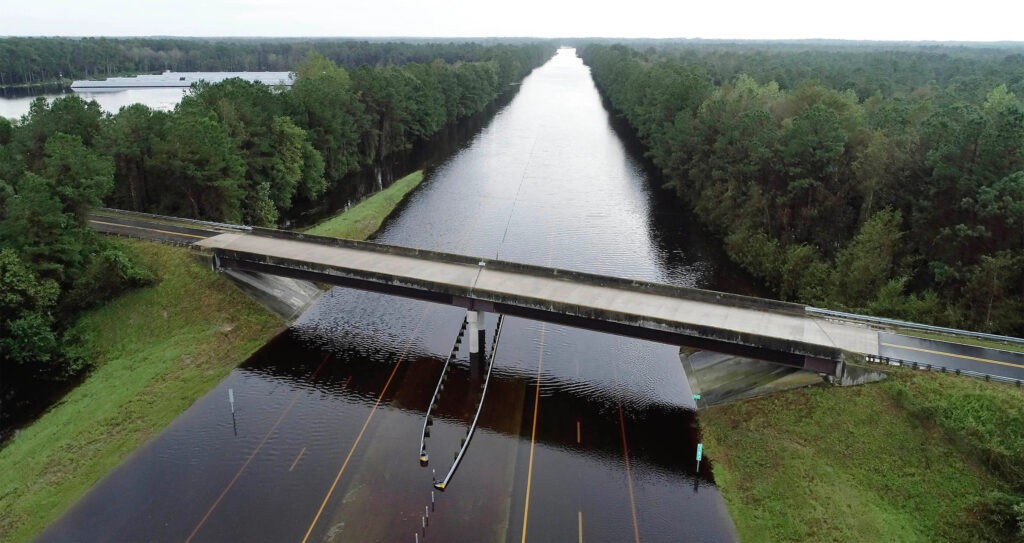In September 2018, Hurricane Florence bore down on North Carolina for five days, producing record-breaking rainfall totals and leaving widespread flooding and damage in its wake.
For the five-year anniversary of the storm, we’re taking a detailed look at Florence, from the lead-up to the storm through the ongoing recovery efforts. The posts are listed and linked below:
- Post 1: An Anxious Arrival
- Post 2: Communities, Disconnected
- Post 3: Inundated Ecosystems
- Post 4: Redefining the Future

This four-part blog post series is based on interviews with two dozen citizens, scientists, and state and local officials who experienced Florence and its impacts first-hand. We wish to thank everyone who shared their time and their memories of Florence to make these posts possible, listed below in order of appearance in the blog:
- Steve Pfaff and Mark Bacon (National Weather Service in Wilmington, NC)
- Jonathan Blaes and Barrett Smith (National Weather Service in Raleigh, NC)
- Robert Welch (CoCoRaHS observer)
- Kevin Kalbaugh and Diana Thomas (NC Emergency Management)
- Matt Lauffer (NC Department of Transportation)
- Karen Amspacher (Core Sound Waterfowl Museum & Heritage Center)
- Scott Kennedy (National Weather Service in Newport/Morehead City, NC)
- Sissy Mills (Jones County Emergency Services)
- Jeff Marcus (The Nature Conservancy)
- Mike Martin (NC Wildlife Resources Commission)
- Dr. Marcelo Ardón (NC State University, Department of Forestry and Environmental Resources)
- Della King and Amanda Hatcher (Duplin County Cooperative Extension)
- Mark Seitz (Pender County Cooperative Extension)
- Dr. Amanda Martin and Maggie Battaglin (North Carolina Office of Recovery and Resiliency)
- Hope Thomson (UNC Environmental Finance Center)
- Dr. Erin Seekamp (NC State University, Coastal Resilience and Sustainability Initiative)
- Dr. Rick Luettich (UNC Chapel Hill, Coastal Resilience Center)
- Dr. Gary Lackmann and Katy Hollinger (NC State University, Dept. of Marine, Earth, and Atmospheric Science)
